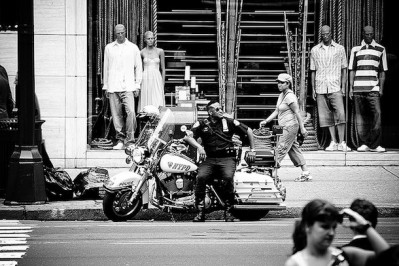NEW YORK CITY, U.S.A. New York City, known as the financial capital of the world, fondly referred to by its residents as the ‘melting pot’, has a population of more than eight million residents. According to a 2010 census, the city’s population is made up of 45% whites, 25% blacks, 28% Hispanics and 2% Asians.
While blacks represent just one quarter of the population and Hispanics slightly over a quarter, together they are responsible for 96% of the crimes in the greater New York according to a report published by the New York Police Department (NYPD) on June 30, 2012.
Any police commissioner responsible to ensure safety of the citizens in the community would be alarmed by the number and expected to remedy the situation quickly. In an attempt to anticipate, prevent and control crimes in the city, Mr. Raymond W. Kelly, New York City Police Commissioner, resorted to the stop-and-frisk program, initiated over two decades in 1990 by former mayor David Dinkins.
Under mayor Dinkins, the stop-question-and-frisk approach was more of a proactive policing strategy that engaged private citizens and displayed police presence everywhere – he recruited 8,000 police officers – in order to discourage criminal activities. The approach worked; by 1994, crime rate had dropped 30%. His successor however, former mayor Rudy Giuliani, implemented a modified version, the stop-and-frisk approach which consisted solely – no private citizen engagement, no police actively patrolling neighborhoods, no police interactions with citizens – in stopping and searching pedestrians for weapons and drugs. By 1996, there was a sharp decline – 39% – in seven felony categories and crimes had continued to drop in double digit year after year.
Not surprisingly, former mayor Giuliani attributed the success to his strategy. Naturally, his successor, former mayor Michael Bloomberg continued to support the stop-and-frisk approach to combat crimes in New York City. Despite repeated demands by the black community activist leaders and repeated protests against the practice, former mayor Bloomberg stood by the Police Commissioner and defended the approach as a strategy that works, “New York is the safest big city in the nation, and our crime reductions have been steeper than any other big city’s,” wrote Mr. Bloomberg in a Washington Post article.
Activist leaders are not buying it; they claim that minorities – blacks and latinos – are unfairly targeted; their civil liberties are trampled by NYPD on a regular basis and there is no data to backup the Commissioner claims that the practice keeps NYC safe. Mr. Serrano, a police officer who has faced harassment, threats and mistreatments for speaking out against the practice, released audio recordings of conversations with his superior pressuring him to make arrest of blacks, age 14 to 21. Mr. Serrano claimed that police officers are under too much pressure to meet a quota, at least 20 such stops per day per police officer.
Others have joined Mr. Serrano in denouncing the stop-and-frisk program; according to MintPress News, “State Senator Eric Adams (D-N.Y.), a former NYPD officer who retired in 2006, reported that NYPD Commissioner Raymond Kelly told him that stop-and-frisk was created to ‘instill fear’ in young African Americans and Latinos.”
Has the practice made NYC safer? Police Commissioner Raymond Kelly thinks so. However, Black Activist Leaders beg the differ; according to New York Civil Liberties Union (NYCLU), the program cannot claim to ensure safety in the City and is heavily biased towards minorities: “nine out of 10 stopped-and-frisked New Yorkers have been completely innocent”:
- In 2002, New Yorkers were stopped by the police 97,296 times.
- 80,176 were totally innocent (82 percent).
- In 2003, New Yorkers were stopped by the police 160,851 times.
- 140,442 were totally innocent (87 percent). 77,704 were black (54 percent). 44,581 were Latino (31 percent). 17,623 were white (12 percent).
- In 2013, New Yorkers were stopped by the police 191,558 times.
- 169,252 were totally innocent (88 percent). 104,958 were black (56 percent), 55,191 were Latino (29 percent) and 20,877 were white (11 percent).
Despite the grim outlook for the black community and its distrust of police sightings, there may be hope on the horizon; current mayor Bill De Blasio shares the black community concerns and understands its frustrations. During his campaign for the office of mayor in 2012, then candidate de Blasio “debunked” to a diversified group of supporters the lies used for the application of stop-and-frisk program.
Now that Mr. de Blasio has assumed the mayorship of the city, all eyes are on him to keep his campaign promises.
Check back tomorrow for the second segment of this article, which will take a look at what the new mayor is doing to address this long standing issue that has plagued the black community for decades.
Correction: April 4, 2014. An earlier version of this article erroneously stated that a 2010 census stated that New York City’s population is made up of 12% Asian. The correct figure is 2%.

